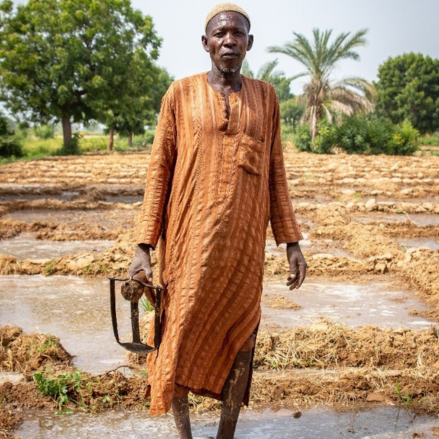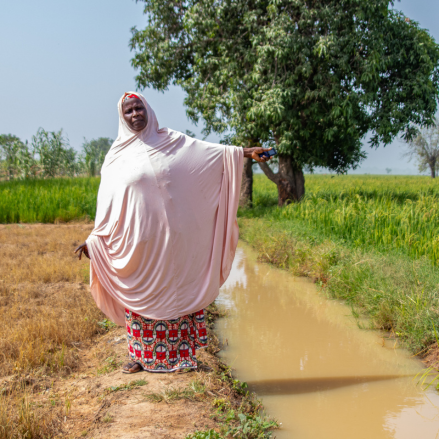When Mustapha Adamu looks over the wide stretch of farmland in Kano State, northern Nigeria, he remembers how different things used to be. Ten years ago, this 6,000-hectare land was difficult to farm. Poor access to water, depleted soil, and unpredictable weather made each planting season uncertain.
“Things were bad here,” says Mustapha, who leads a Water Users’ Association that brings together hundreds of irrigation farmers. “Farming this land was a tough task.”
But that picture is changing. With support from the Transforming Irrigation Management in Nigeria (TRIMING) project, farmers like Mustapha are now better equipped to irrigate their fields, boost productivity, and manage resources more efficiently.
Led by Nigeria’s Federal Ministry of Water Resources and Sanitation with financing from The World Bank’s International Development Association (IDA), the project has modernized irrigation systems, improved water management, and upgraded critical infrastructure—laying the foundation for a more resilient agriculture.
Tackling Climate and Economic Pressures
With over 70% of Nigeria’s population under 30, the demand for jobs is rising rapidly. Agriculture, which accounts for nearly a quarter of the country’s GDP and employs more than a third of the population, offers a vital path to economic opportunity. But climate change, marked by longer dry spells, frequent floods, and erratic rainfall, is putting rural livelihoods at risk. With less than 1% of Nigeria’s farmland irrigated, most farmers remain vulnerable to shifting weather patterns.
The TRIMING project supported the rehabilitation of irrigation systems and provided training for farmers across four major schemes: Kano River, Hadejia Valley, Bakolori, and Dadin Kowa. In Mustapha’s community in Kano State, irrigated land expanded to over 15,000 hectares and is now farmed more intensively and productively.




